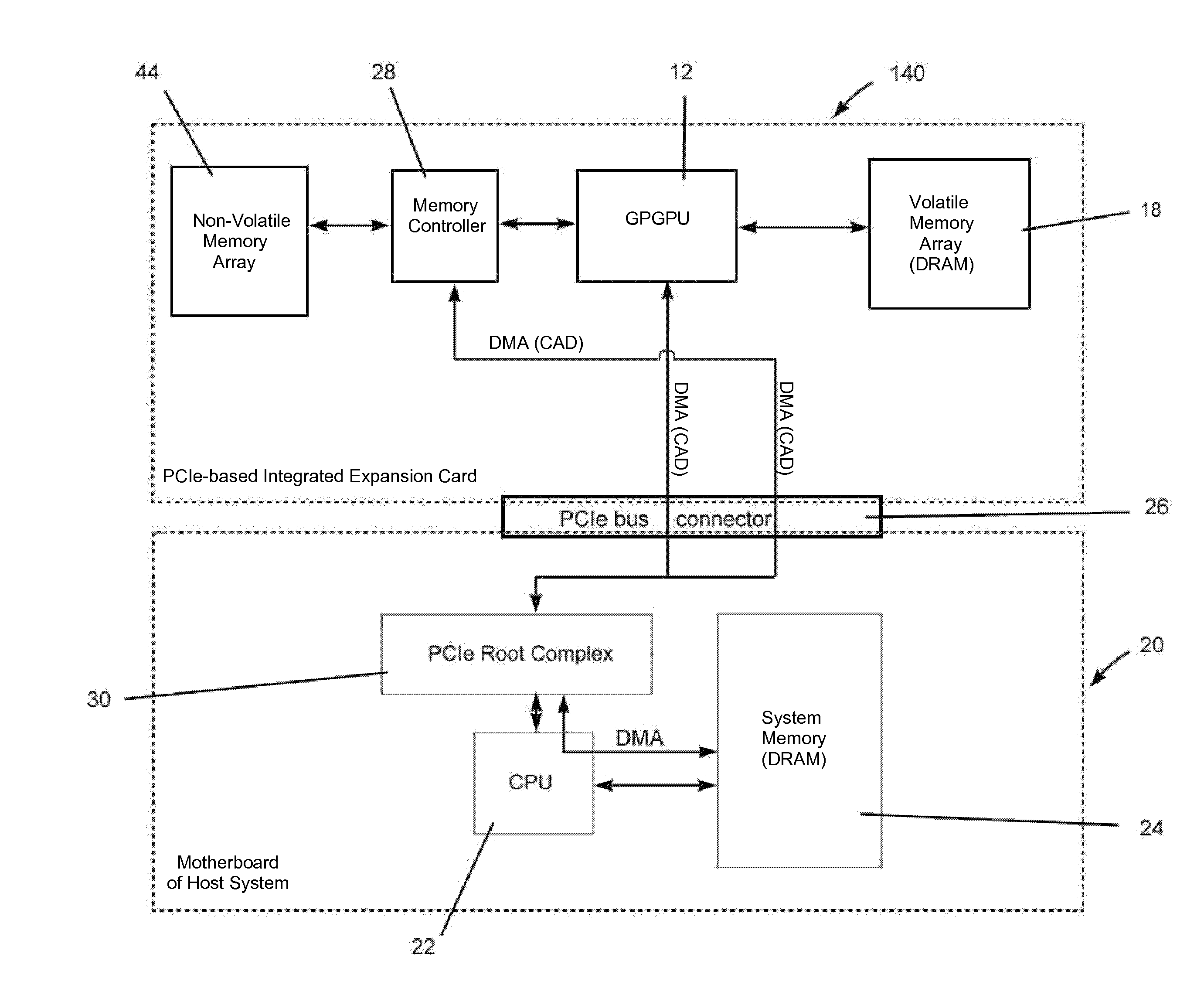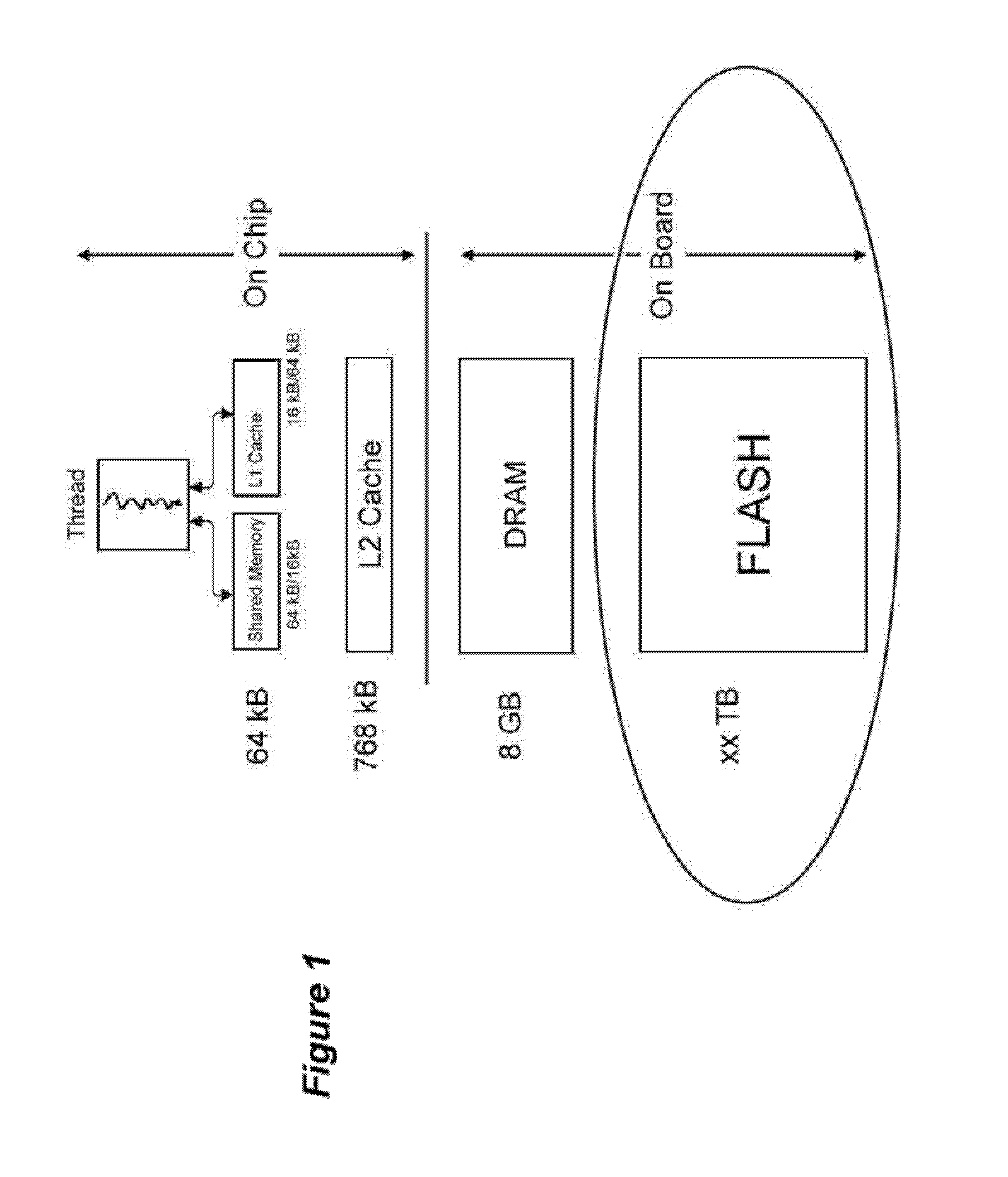Integrated storage/processing devices, systems and methods for performing big data analytics
a technology of big data and storage/processing devices, applied in the field of data processing systems, can solve the problems of limited lfb) functionally integrated with the gpgpu on the graphics expansion card, the cpus is not designed to digest data on a massive scale, and the cpus is not very good at massive parallel analytics of large data, etc., and achieves the effect of faster throughpu
- Summary
- Abstract
- Description
- Claims
- Application Information
AI Technical Summary
Benefits of technology
Problems solved by technology
Method used
Image
Examples
Embodiment Construction
[0044]The present invention is targeted at solving the bottleneck shift from computational resources to the I / O subsystem of computers used in big data analytics. Conventional solutions using GPGPU computing are data starved in most cases since the storage system cannot deliver data at a rate that makes use of the processing capabilities of massive parallel stream processors, for example, the CUDA (compute unified device architecture) parallel computing architecture developed by the nVidia Corporation. Though the adding of additional solid state drives (SSDs) to function as prefetch caches ameliorates the problems, this approach is still slowed by latencies and a sub-optimal implementation of a streamlined direct I / O interface connected to graphics processing units with enough storage capacity to hold large data sets at a reasonable cost and power budget.
[0045]To overcome these problems, the present invention provides integrated storage / processing systems and devices that are config...
PUM
 Login to View More
Login to View More Abstract
Description
Claims
Application Information
 Login to View More
Login to View More - R&D
- Intellectual Property
- Life Sciences
- Materials
- Tech Scout
- Unparalleled Data Quality
- Higher Quality Content
- 60% Fewer Hallucinations
Browse by: Latest US Patents, China's latest patents, Technical Efficacy Thesaurus, Application Domain, Technology Topic, Popular Technical Reports.
© 2025 PatSnap. All rights reserved.Legal|Privacy policy|Modern Slavery Act Transparency Statement|Sitemap|About US| Contact US: help@patsnap.com



